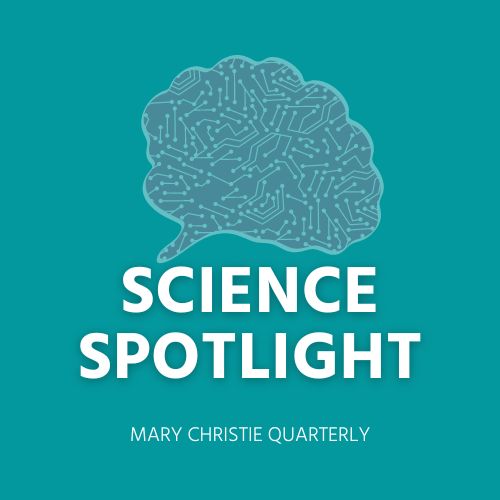The Adolescence Research Group, a psychology lab at the University of Virginia, explores the experience and social development of teens and young adults. A recent study published in the College Student Affairs Journal evaluates an intervention called The Connection Project, which the group designed in-house to help change the quality of peer relationships. Meghan Costello, MA, the lead author of Randomized Evaluation of an Intervention to Enhance a Sense of Belongingness among Entering College Students, said that the original idea for The Connection Project was “born out of the other work that we do where we’re seeing that friendships are so pivotal for development.”
The Adolescence Research Group has a deep well of research on the impacts of specific elements of adolescence, especially social connections, on wellbeing. Their first major research project, started in 1998, is an ongoing longitudinal study examining the influences of social relationships, autonomy, and attachments. Through what is now called the Virginia Institute for Development in Adulthood (VIDA), the group has followed a cohort for about 25 years and amassed extensive evidence that adolescent social relationships are not only vital to mental health later on, but can predict physical health into adulthood – on measures including blood pressure, inflammation and epigenetic age. About 10 years ago, Joseph Allen, a professor of psychology and Principal Investigator of the Kliff-Vida Project who leads the lab, said, “We decided we wanted to start turning that into action,” creating interventions that could capitalize on the link between social connection and wellbeing.
The Group’s first intervention, The Teen Connection Project, was created for high school students to help improve the quality of their peer relationships. Dr. Allen said the idea began “with the notion that some adolescents end up with good social relationships, some not so good. And to some extent it’s dependent on background and such, but to some extent it’s random.” He went on to say that as a young person, “If you were lucky, you fell into a group where people let down their guard, became comfortable with each other, realized how much they had in common, and formed super strong relationships,” like those often created at summer camp, in a theater group, or on a sports team. “But if you weren’t lucky, this didn’t happen.” The group tried to determine the specific elements of interactions that would make those kinds of bonds occur and then determine how to create them on their own. “We wanted to create the ingredients where it felt safe for people to connect,” said Allen. “And if we made it safe and we gave them the opportunity, we thought it would happen.” Costello noted that some of the elements of the intervention come from smaller interventions that other groups have already tested, “that have been shown to make meaningful change, even just in one instance.” Pieces like “hearing someone else express that connecting is important to them makes a meaningful impact on me, makes me more likely to try to connect with them.”
For the first intervention, which was implemented in high schools in St. Louis and Ferguson, Missouri, students were assigned to small groups which would meet for 12 sessions for activities and discussions, guided by a trained facilitator. The initiative was designed to gradually change the participants’ views of the capacity of peer relationships, push them to open up to their peers, showing them they can be healthy sources of support. “We create this curriculum that increases in intensity in a way that’s safe and supportive and encourages young people to connect with their peers,” said Costello. “Ultimately what they’re learning is – ‘It was worth it for me to ask for help or it was worth it for me to try to be supportive to someone else.’”
Adolescent social relationships are not only vital to mental health later on, but can predict physical health into adulthood.
Interesting findings emerged in the evaluation of the high school program – especially as time post-intervention increased. Four months after the group sessions concluded, the students who received the intervention displayed lower levels of depressive symptoms and higher levels of academic engagement than control group members. Interestingly, the researchers found that the students who did not participate (the control group) viewed the students who engaged in the group sessions as more approachable than their peers who didn’t receive the intervention – suggesting that there were changes in their social behavior at school. A recently published paper on this version of the intervention states, “The active ingredient hypothesized to ultimately influence teens’ level of functioning was not the content of the intervention, but the enhanced relationships that it was designed to promote.”
The success of the project led the research group to their latest intervention – a version of The Connection Project redesigned for college students. The subject of their latest evaluation, the college version is administered to freshman and transfer students and facilitated by upperclassmen at the University of Virginia, all of whom receive course credit for their participation. While the first cohort of students to participate in “Hoos Connected” was interrupted by the COVID-related college closures, the researchers continued with their evaluation and still found an increase in “school belongingness” when compared to the control group of students. Further, while the control group showed an increase in depressive symptoms and loneliness, the students who participated in the group sessions experienced a “buffering effect” against them. Costello said they hope the program can prevent some of the decline in mental health students experience over the course of a semester and relieve some of the immense pressure that mental health services are under on college campuses.
In another recent paper on the findings of the evaluation, the group noted that “Program effects were stronger for students from marginalized racial or ethnic backgrounds, students from lower socioeconomic status households, and transfer students.” This finding suggests that this type of program could be beneficial for students from underrepresented groups, who often experience isolation or lack of belonging at majority-white institutions. The groups in these interventions are intentionally demographically diverse. “Our ultimate goal in making these groups diverse was to try to promote the internalized conclusion that everyone has stuff going on under the surface that I don’t know about, regardless of what my first blush impressions might be,” Costello noted. “So, promoting that experiential learning that regardless of what a person brings in…we can all gather around this idea that we have really meaningful stuff that we don’t always share with people. And what would it mean to do that sharing for us?”
The researchers are continuing to improve the program, taking feedback from the students and responding to what students say is important to them. Last year, they served 700 students with plans to serve 2,000 (about half of an entering class) within the next three years. Several other schools have already shown interest, and the lab is looking for the best fit to test the program again.
For Dr. Allen, it is important that the program becomes part of the educational experience. “Our perspective is this is an aspect of the residential college that is untapped,” he said. “Why bring kids together to a residential college? Well, it’s because you can give them a social and emotional experience of connection that can change their lives, that can shape their view of other people going forward. Our view is not just to help college students feel more connected. It’s that connection should be part of what a well-rounded college education provides. This content is something that’s every bit as important as your world history course. “




